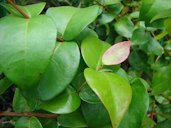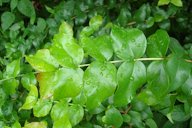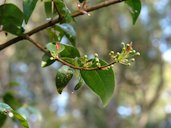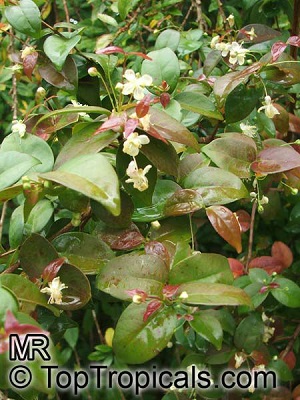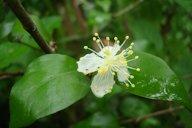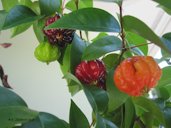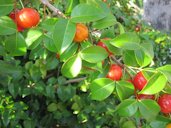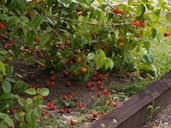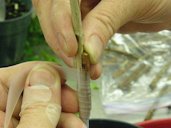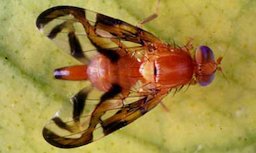| Surinam Cherry, Pitanga - Eugenia uniflora | |||||||||||||||||||||||||
|---|---|---|---|---|---|---|---|---|---|---|---|---|---|---|---|---|---|---|---|---|---|---|---|---|---|
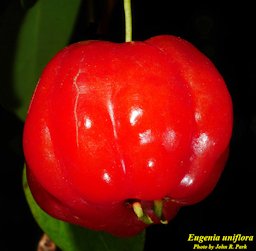 Fig. 1 Surinam cherry, Eugenia uniflora 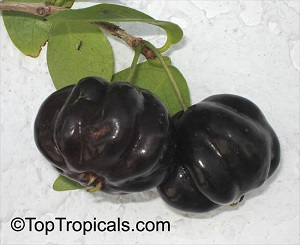 Fig. 2  Black variety 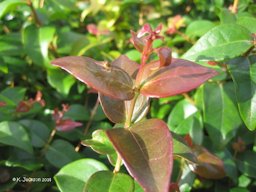 Fig. 3  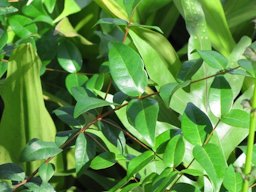 Fig. 4  Leaves and flower buds 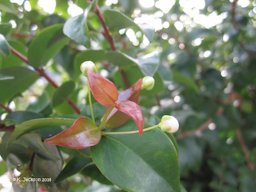 Fig. 7  Flower buds and young red leaves 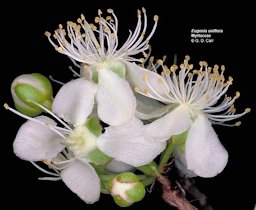 Fig. 8  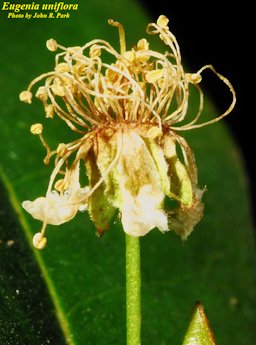 Fig. 9  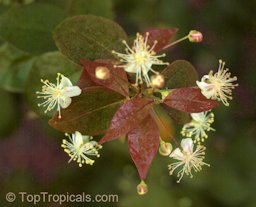 Fig. 10  New red leaf growth, flowers and buds 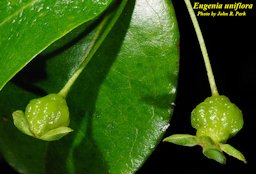 Fig. 15  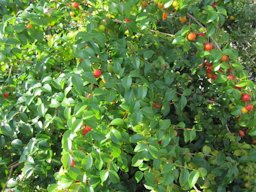 Fig. 16  E. uniflora fruiting habit 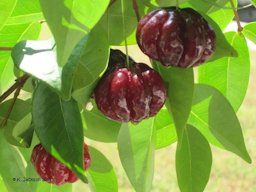 Fig. 17  Black Surinam cherries ![Credit: © Kwan, NatureLoveYou Eugenia uniflora[Surinam Cherry, Brazilian Cherry, Pitanga]](images/SurinamCherryNatureLovesYou300.jpg) Fig. 23  E. uniflora (Surinam cherry, Brazilian cherry, pitanga) 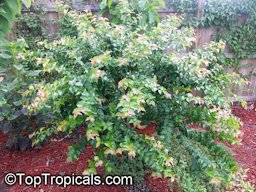 Natural growth habit 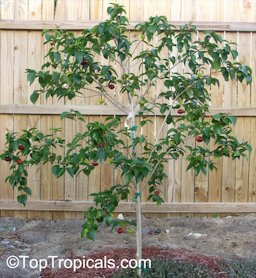 Trained as a standard 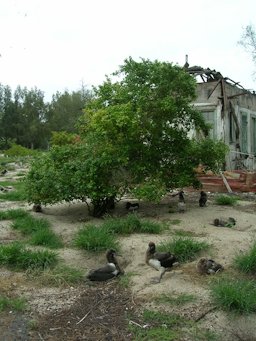 Fig. 26  E. uniflora (Surinam cherry, pitanga); habit in Laysan albatross colony, Cable Company buildings Sand Island, Midway Atoll 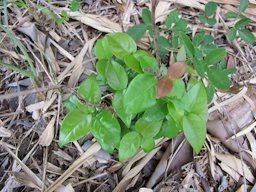 Fig. 27  E. uniflora seedling, John Prince Park Lake Worth, Florida 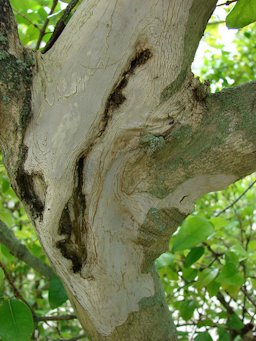 Fig. 28  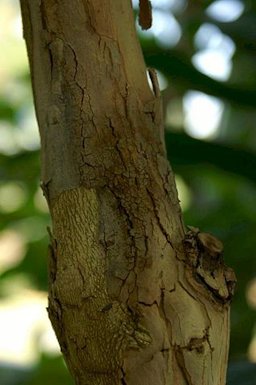 Fig. 29  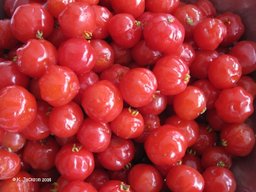 Fig. 30  |
Scientific
name Eugenia uniflora Pronunciation yoo-JEE-nee-uh yoo-nif-FLOR-uh 2 Common names English: Surinam cherry, Brazilian cherry, Cayenne cherry, pitanga, Florida cherry; Brazil: cerisier de Cayenne, cerisa carre, ginga, pitanga, pitangueira (Portuguese); French: cerisier carré, cerisier de Cayenne, cerise de pays; Guadeloupe and Martinique: cerise à côtes or cerises-cotes; French Guiana: barka tree, Surianm cherry; cerise de Cayenne, cerise de pays, or cerise carée; Spanish: cereza de Cayena; Venezuela: pendanga; El Salvador: guinda; Argentina: Arrayán, Ñangapiré; Colombia: cereza quadrada; Surinam: Surinaamsche kersh, kerseboom, Surinaamse kers, switie kersie wiwiri; zoete kers, or monkie monkie kersie 3,6 Other Common names Synonyms E. michelii Lam., E. strigosa (Berg) Arechav, Myrtus brasiliana L., Stenocalyx michelii Berg., S. strigosus O. Berg. 7 Family Myrtaceae (myrtle family) Origin Central and eastern areas of South America 5 USDA hardiness zones 9b-11 1 Uses Fruit; superior hedge; container or above-ground planter; trained as a standard; buffer strips around parking lots; median strip plantings in the highway; border 1 Height 8-20 ft (2.5-6 m) 1 Spread 5-15 ft (1.5-4.6 m) Plant habit Natural habit of the plant is an upright spreading form, similar to crape myrtle 1 Growth rate Moderate Trunk/bark/branches Tan-colored; thin, peeling bark; multiple stems; no thorns 1 Leaves Fragrant; less than 2 in. (5 cm); purple or red; ovate; opposite/subopposite 1 Flowers White, fragrant, spring flowering 1 Fruit Round, fleshy, orange with ribs; develops and ripens quickly, only 3 weeks after the flowers open 3 Season Mar., Apr. through May, June; Sept.. through Nov. 2 Light requirement Full sun-partial shade Soil tolerances Alkaline; clay; sand; acidic; loam 1 pH preference 5.5-7.5 Drought tolerance Moderate Aerosol salt tolerance Poor Soil salt tolerance Poor Cold tolerance 22 °F (-5.6 °C) Plant spacing 2-5 ft (0.6-1.5 m) for hedge/screen planting 1 Roots It has a long taproot and can survive periods of drought 4 Invasive potential * Eugenia uniflora is on the Invasive list for south Florida; homeowners should no longer plant Surinam cherry; if you have any shrubs in your yard, consider removing them to help curb their spread 2 Pest resistance No serious pests are normally seen on the plant Known hazard The seeds are extremely resinous and should not be eaten; diarrhea has occurred in dogs that have been fed the whole fruits by children; the strong, spicy emanation from bushes being pruned irritates the respiratory passages of sensitive persons 3 Reading Material Eugenia uniflora Surinam Cherry, University of Florida pdf Surinam Cherry, Fruits of Warm Climates Surinam Cherries: You’ll love ‘em or hate ‘em, Eat The Weeds Surinam Cherry, Twelve Fruits Project, University of Hawai'i at Mānoa Origin E. uniflora is native to central and eastern areas of South America, specifically to Uruguay, Paraguay, Brazil (Minas Gerais, Parana, Rio Grande do Sul, Rio de Janeiro, Santa Catarina, Sao Paulo), Bolivia (La Paz, Santa Cruz, Tarija), and Argentina (Catamarca, Chaco, Corrientes, Entre Rios, Formosa, Jujuy, Misiones, Salta, Santa Fe, Tucuman). 7 It is also mistakenly considered by some authors (e.g. Morton, 1987; Rifai, 1992) as native to northern South America, Guyana, Surinam and French Guiana and the north-east of Brazil, which has also tended to be repeated by other sources (e.g. Janick and Paull, 2008). The common names also appear to confuse people regarding its native range, as it is known as Surinam cherry, Barbados cherry and even Florida cherry. 5 It was introduced as an ornamental and edible fruit before 1931 in Florida. By 1961 it was widely planted in central and south Florida, especially for hedges. A decade later was seen escaping cultivation and invading hammocks in south-central and south Florida. In 1982 it became a target of eradication in southern Florida. It is now reported in 20 wildlife areas as well, and threatening rare scrub habitat. Thus, by eating the fruit and destroying the seeds you are helping the environment. 2 Eugenias, South American Berries, Sub-tropical Fruit Club of Qld Description Surinam Cherry is an excellent shrub for screens or hedges, with smooth, shiny, aromatic leaves which are bright red when young. This lends a reddish cast to a clipped hedge during the growing season. The small thin leaves allow the plant to be sheared easily, and it is often used as a hedge. The plant remains dense all the way to the ground if the top of the hedge is clipped so it stays slightly narrower than the bottom. The small, fragrant, white flowers are followed by one-inch diameter, tasty, ribbed, red berries which are unusually high in vitamin C. 1 Leaves Young leaves are notably pink to bronze or dark red (Fig. 3), turning shiny dark green above, paler below when mature but turning red in cold, dry weather. Leaves are opposite, simple, ovate or narrowly ovate to lanceolate, 1-2.4,3.1 in. (2.5-6,-8 cm) long and 0.6-1 in. (1.5-3 cm) wide, with 7-9 pairs of lateral veins and margins entire or slightly and irregularly wavy. Leaf bases are rounded or slightly cordate, apex obtuse to shortly acuminate, glabrous, glossy, and pellucidly dotted. Petioles are 0.04-0.1 in. (1-3 mm) long. 5
Fig. 5. E. uniflora (Surinam cherry, pitanga) leaves, Kula Ace Hardware and Nursery, Maui, Hawa'ii Flowers Long-stalked flowers, borne singly or as many as 4 together in the leaf axils, have 4 delicate, recurved, white petals and a tuft of 50 to 60 prominent white stamens with pale-yellow anthers. 3 Flowering occurs on the growth from the previous season or on the basal part of shoots of the current season. The fruit then develops and ripens very quickly, which can occur in as little as three weeks after anthesis. 5
Fig. 11. Leaves and flower buds Fig. 12. Flowers and new red foliage growth Fruit The 7- to 8-ribbed fruit, oblate, 3/4 to 1 1/2 in. (2-4 cm) wide, turns from green to orange as it develops and, when mature, bright-red to deep-scarlet or dark, purplish maroon ("black") when fully ripe. The skin is thin, the flesh orange-red, melting and very juicy; acid to sweet, with a touch of resin and slight bitterness. There may be 1 fairly large, round seed or 2 or 3 smaller seeds each with a flattened side, more or less attached to the flesh by a few slender fibers. 3 "The Surinam cherry is not a cherry nor is it exclusively from Surinam. It’s also not from Florida but it’s called the Florida Cherry because it’s naturalized throughout the state and real sweet cherries don’t grow well there. I will freely admit these little red pumpkins are an acquired taste because most folks are expecting some kind of cherry taste and they don’t have that. No matter how ripe, there is a resinous quality. To be blunt, you either like them or you definitely do not. More so, they must be picked when absolutely ripe or they are a very unpleasant edible experience." 2
Fig. 18. Black variety: different stages of ripeness Varieties There are 2 distinct types: the common bright-red and the rarer dark-crimson to nearly black. The deep red, almost black fruited varieties produce sweeter fruit without that tart (resinous) aftertaste that is specific for Surinam Cherry. 3 The black-fruited Surinam cherry is called “Kawahara” in Kona, Hawai'i. 4 Harvesting In Florida and the Bahamas, there is a spring crop, March or April through May or June; and a second crop, September through November, coinciding with the spring and fall rains. The fruits should be picked only when they are so ripe as to fall into the hand at the lightest touch, otherwise they will be undesirably resinous. Gathering must be done daily or even twice a day. 3 Propagation Due to recalcitrant nature of the seeds, they have a short viable life, cannot be dried well and can not withstand low temperatures. Seeds remain viable for not much longer than a month and germinate in 3 to 4 weeks. Red type and black type forms usually come true to seed. Although usually grown from seed, grafting of plants that bear superior fruit occurs in countries where the fruit is commercially cultivated (e.g., Brazil and India). 4 Successful air-layering is also reported. Numerous seedlings are often found under existing trees, and the small ones can be easily transplanted. Some seedlings will produce fruit in 2–3 years, while others will produce in 5–6 years. 4
Fig. 21. "I was working on a research project with Dr. John Griffis and other faculty at UH, on propagating techniques for Surinam Cherry (E. uniflora). Here, I'm veneer grafting a plant. This method turned out to be quite successful." Pruning Surinam cherry seedlings grow slowly; some begin to fruit when 2 years old; some may delay fruiting for 5 or 6 years, or even 10 if in unfavorable situations. They are most productive if unpruned, but still produce a great many fruits when close-clipped in hedges. 2 Pruning dead wood and shaping or lowering the tree to facilitate harvesting is advisable, usually after the sixth or seventh year of growth. 4 Fertilizing Quarterly feeding with a complete fertilizer formula promotes fruiting. 3 Irrigation It requires only moderate rainfall and, being deep-rooted, can stand a long dry season. 3 The plant responds quickly to irrigation, the fruit rapidly becoming larger and sweeter in flavor after a good watering. 3 Pests Surinam cherry is bothered by fruit flies (Fig. 22), scale and caterpillars.
Caribbean Fruit Fly, Anastrepha suspensa (Loew), University of Florida pdf Diseases Armillariella ( Among diseases encountered in Florida are leaf spot caused by Cercospora eugeniae, Helminthosporium sp., and Phyllostica eugeniae; thread blight from infection by Corticium stevensii; anthracnose from Colletotrichum gloeosporioides; twig dieback and root rot caused by Rhizoctonia solani; and mushroom root rot, Clitocybe) tabescens. 3 The use of insecticidal soap or neem oil sprays, and proper care of the tree, help to combat these diseases. 4 Food Uses Children enjoy the ripe fruits out-of-hand. For table use, they are best slit vertically on one side, spread open to release the seed(s), and kept chilled for 2 or 3 hours to dispel most of their resinously aromatic character. If seeded and sprinkled with sugar before placing in the refrigerator, they will become mild and sweet and will exude much juice and serve very well instead of strawberries on shortcake and topped with whipped cream. 3 Can be made into pie or sauce or preserved whole in sirup. They are often made into jam, jelly, relish or pickles. Brazilians ferment the juice into vinegar or wine, and sometimes prepare a distilled liquor. 3 Medicinal Properties ** In Brazil the leaf infusion is taken as a stomachic, febrifuge and astringent. In Surinam, the leaf decoction is drunk as a cold remedy and, in combination with lemongrass, as a febrifuge. 3 Plant extracts also show significant anti-inflammatory properties, and are used extensively as a folk remedy in South America against stomach diseases. Various uses in traditional medicine have been reported. 8 Other Uses A strong-smelling essential oil is obtained from crushing and distilling the foliage, containing citronellal, geranyl acetate, geraniol, cineole, terpinene, sesquiterpenes and polyterpenes. 6 The leaves have been spread over the floors of Brazilian homes. When walked upon, they release their pungent oil which repels flies. Pitanga essential oil is a very interesting ingredient for use in perfumery attributed to its olfactory characteristic. It provides blooming, freshness and a distinctive character (wet wood, green, spice). Skin sensitization and dermal irritation – human patch tests carried out with 1.5% essential oil in ethanol gave no reactions under the current conditions of use as a fragrance ingredient. Photoirritation and photoallergy-UV spectrum studies revealed that the oil did not absorb UV light at wavelengths in the range of 290–400 nm and therefore would have no potential to elicit photoirritation or photoallergy under the current conditions of use as a fragrance ingredient. 6 The bark contains 20 to 28.5% tannin and can be used for treating leather. The flowers are a rich source of pollen for honeybees but yield little or no nectar. 3 Pitanga is also used for bonsai. 6 General The scientific name is Eugenia uniflora. Eugenia is named for Prince Eugene of Savoy, 1663-1736, a patron of botany and horticulture. He was a great general and spent most of his life fighting in wars, constantly. Apparently it agreed with him. When he died in his sleep at age 72 he was, at the time, the richest man in the world… if it wasn’t for a fruit would we ever hear of him? Uniflora is from Latin unus, one or single and folium, to bloom, read one leaved. 2
Fig. 31. Surinam cherry distribution map , wild populations Other Edible Eugenia species: Cherry of the Rio Grande, E. involucrata Grumichama, E. brasiliensis Rain Forest Plum, E. candolleana Pitomba, E. luschnathiana Further Reading Eugenia uniflora, PROSEA Foundation Purple-fruited Pitanga (Eugenia uniflora L.): Crop Development and Commercialization, Florida State Horticultural Societe pdf Surinam Cherry Botanical Art List of Growers and Vendors |
||||||||||||||||||||||||
| Bibliography 1 Gilman, Edward F. "Eugenia uniflora Surinam Cherry." Environmental Horticulture Dept., UF/IFAS Extension, FPS-202, Original Pub. Oct. 1999, Reviewed Feb. 2014, AskIFAS, edis.ifas.ufl.edu/publication/FP202. Accessed 22 Jan. 2015. 2 Deane, Green. "Surinam Cherries: You’ll love ‘em or hate ‘em." Eat the Weeds and other things, too, eattheweeds.com. Accessed 23 Jan. 2015. 3 Fruits of Warm Climates. Julia F. Morton, Miami, 1987.4 Love, Ken, et al. "Surinam Cherry." Twelve Fruits With Potential Value-Added and Culinary Uses, University of Hawai‘i at Mānoa, College of Tropical Agriculture and Human Resources, 2007, www.hawaiifruit.net/12trees.html. Accessed 9 Mar. 2016. 5 "Eugenia uniflora. (Suriinam cherry)." CABI, Invasive Species Compendium, Wallingford, UK, CAB International, www.cabi.org/isc/datasheet/23099. Accessed 12 Feb. 2017. 6 Lim, T. K. "Edible medicinal and non-medicinal plants, Fruits, vol. 3." EPDF, 2012, epdf.pub/volume-3-fruits.html. Accessed 10 Oct. 2021. 7 "Eugenia uniflora L." USDA, Agricultural Research Service, U.S. National Plant Germplasm System, GRIN-Global, npgsweb.ars-grin.gov/gringlobal/taxon/taxonomysearch.aspx. Accessed 10 Oct. 2021. 8 Rifai, M. A. "Eugenia uniflora L." Edible fruits and nuts, Plant Resources of South-East Asia No 2, Edited by E. W. M. Verheij, and R. E. Coronel, PROSEA Foundation, Bogor, Indonesia, record 1829, 1991, PROSEA, (CC BY-NC-SA 3.0), www.prota4u.org/prosea/view.aspx?id=1829. Accessed 10 Oct. 2021. Photographs Fig.
1,9,15
Park, John R. "Eugenia
uniflora." Allas
of Florida Plants,
Institute for Systematic Botany, University of South Florida, Tampa, S.
M. Landry and K. N. Campbell (application development), USF Water
Institute, 2020, florida.plantatlas.usf.edu/photo.aspx?ID=8868.
Accessed 9 Oct. 2021. Fig.
3,7,16,17,18,19 Jackson, Karen. Surinam Cherry Series, 2014, www.growables.org. Fig. 5 Starr, Forest and Kim. "Eugenia uniflora (Surinam cherry, pitanga) leaves, Kula Ace Hardware and Nursery, Maui, Hawai'i." Starr Environmental, 6 Sept. 2007, (CC BY 3.0), starrenvironmental.com. Accessed 22 Jan. 2015. Fig. 6,14,23 Kwan. "Eugenia uniflora [Surinam Cherry, Brazilian Cherry, Pitanga]." The Plant Observatory, 2010, natureloveyou.sg. Accessed 13 Feb. 2017. Fig. 8
Carr, Gerald,D. "Eugenia
uniflora, Myrtaceae." University of Hawai'i,
Botany Dept., Mānoa Campus Plants, botany.hawaii.edu.
Accessed 22
Jan. 2015. Fig. 13 MR. "Eugenia uniflora." Top Tropicals, toptropicals.com. Accessed 23 Jan. 2015. Fig.
16 Starr,
Forest and Kim. "Eugenia
uniflora (Surinam
cherry, pitanga) fruiting
habit. Lanai City, Lanai, Hawaii." Starr Environmental,
2007,
(CC BY 3.0),
starrenvironmental.com.
Accessed 13 Feb. 2017. Fig. 21 Manners, Malcom. "Veneer graft." Wikimedia Commons, 2007, (CC BY 2.0), commons.wikimedia.org. Accessed 13 Feb. 2017. Fig. 22 "Caribbean fruit fly." Division of Plant Industry, edis.ifas.ufl.edu. Accessed 23 Jan. 2017. Fig.
26 Starr,
Forest and Kim.
"Eugenia uniflora
(Surinam
cherry, pitanga); habit
in Laysan albatross colony. Cable Company buildings Sand Island, Midway
Atoll." Starr Environmental,
2008,
(CC BY 3.0),
starrenvironmental.com.
Accessed 13 Feb. 2017. Fig. 28 Starr, Forest and Kim. "Eugenia uniflora (Surinam cherry, pitanga) bark. Cable Company buildings Sand Island, Midway Atoll." Starr Environmental, 2008, (CC BY 3.0), starrenvironmental.com. Accessed 22 Jan. 2015. Fig. 29 Stang, David. "Eugenia uniflora." Wikimedia Commons, 2006, commons.wikimedia.org. Accessed 23 Jan. 2015. Fig.
30 Jackson, Karen. Surinam Cherry Series, 2014, www.growables.org. Fig.
31 "Eugenia
uniflora Distribution
Map." Atlas of Florida
Vascular Plants,
Institute for Systematic Botany, University of South Florida,
Tampa, S.
M. Landry and K. N. Campbell (application development), USF Water
Institute, 2020,
florida.plantatlas.usf.edu.
Accessed
13 Feb. 2017. ** Information provided is not intended to be used as a guide for treatment of medical conditions. Published 22 Jan. 2015 LR. Last update 27 Mar. 2022 LR |
|||||||||||||||||||||||||
